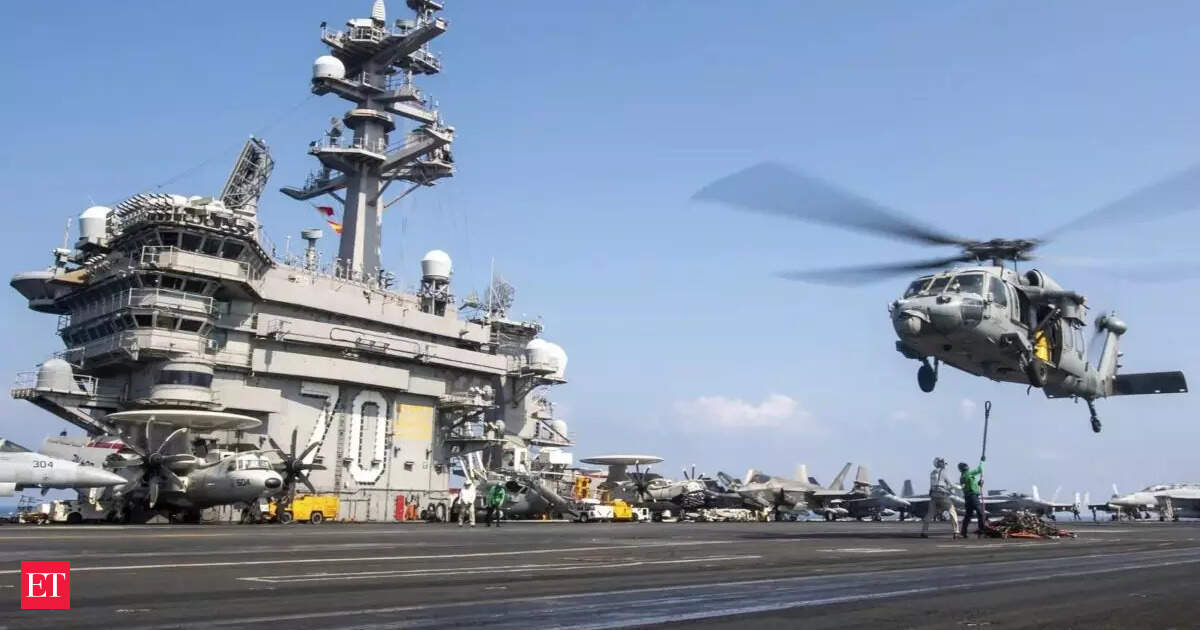A senior US defense official has rejected claims by Iranian state media that a US Navy destroyer was forced to retreat after a mid-sea encounter with an Iranian military helicopter in the Gulf of Oman on Wednesday (July 23). The Pentagon called the interaction “safe and professional,” dismissing Tehran’s account as misinformation. The latest flashpoint comes when the region is already on edge following recent US airstrikes on Iranian nuclear facilities.
The incident involved the USS Fitzgerald (DDG-62), a guided-missile destroyer, which was reportedly approached by an Iranian SH-3 Sea King helicopter at approximately 10:50 am local time while sailing in international waters.
Iranian state television claimed the helicopter issued a warning to the US ship to alter its course, asserting that the area was under Iranian monitoring. The report alleged the US destroyer issued threats in return but ultimately changed direction and left the area after further warnings from the helicopter, which Iran claimed was under full protection of the Iranian Army’s air defense network.
“This interaction had no impact on USS Fitzgerald’s mission and any reports claiming otherwise are falsehoods and attempts by Iran’s Islamic Revolutionary Guard Corps (IRGC) to spread misinformation,” a US Central Command (CENTCOM) spokesperson said in a written statement.
No warning shots were fired, and US officials maintained that the Fitzgerald was operating within its rights in international waters, following pre-planned transit routes. Imagery provided by satellite tracking firms also showed no deviation in the destroyer’s movements.
 Live Events
Live Events
Aftermath of US Strikes on Iran
The maritime encounter comes just weeks after the US launched coordinated airstrikes on Iranian nuclear facilities under “Operation Midnight Hammer”, targeting sites in Fordow, Natanz, and Isfahan. The air campaign, launched on June 22, was intended to disrupt Iran’s suspected nuclear weapons program, which Tehran insists is solely for peaceful purposes.
According to defense officials, the Fordow site sustained significant damage, but enrichment operations at Natanz and Isfahan have partially resumed, raising concerns about Iran’s technical resilience.
The Iranian government condemned the strikes as “an act of aggression” and pledged to rebuild its nuclear infrastructure. Iran’s Supreme National Security Council vowed to resume high-level uranium enrichment “without constraint,” while also warning it could withdraw from the Nuclear Non-Proliferation Treaty (NPT) if European sanctions are reimposed.Regional tensions and naval security
The Gulf of Oman, a strategic waterway near the Strait of Hormuz, has long been a flashpoint between the US and Iran. Nearly one-fifth of the world’s oil supply passes through the strait, making it a critical chokepoint vulnerable to geopolitical disruptions.
In response to escalating threats, the USS Nimitz Carrier Strike Group has been redirected to the region ahead of schedule. A Pentagon official confirmed to reporters that surveillance and defensive assets have also been increased “to ensure deterrence and protect freedom of navigation.”
The Iranian military has increased air and naval patrols in recent weeks, following calls from senior IRGC commanders to “monitor and confront foreign warships” near Iranian territory. Iran’s state broadcaster on Wednesday broadcast edited footage showing the Sea King helicopter flying over a destroyer, although the authenticity and timeline of the video could not be independently verified.
The International Atomic Energy Agency (IAEA) is expected to release a preliminary assessment of the US strikes’ impact on Iran’s nuclear capabilities by early August. Iran has also agreed to allow an IAEA technical team to visit one of the bombed sites, although access to other key facilities remains restricted.
Meanwhile, the US Navy says it will continue its operations “without interruption or intimidation” in accordance with international maritime law.
